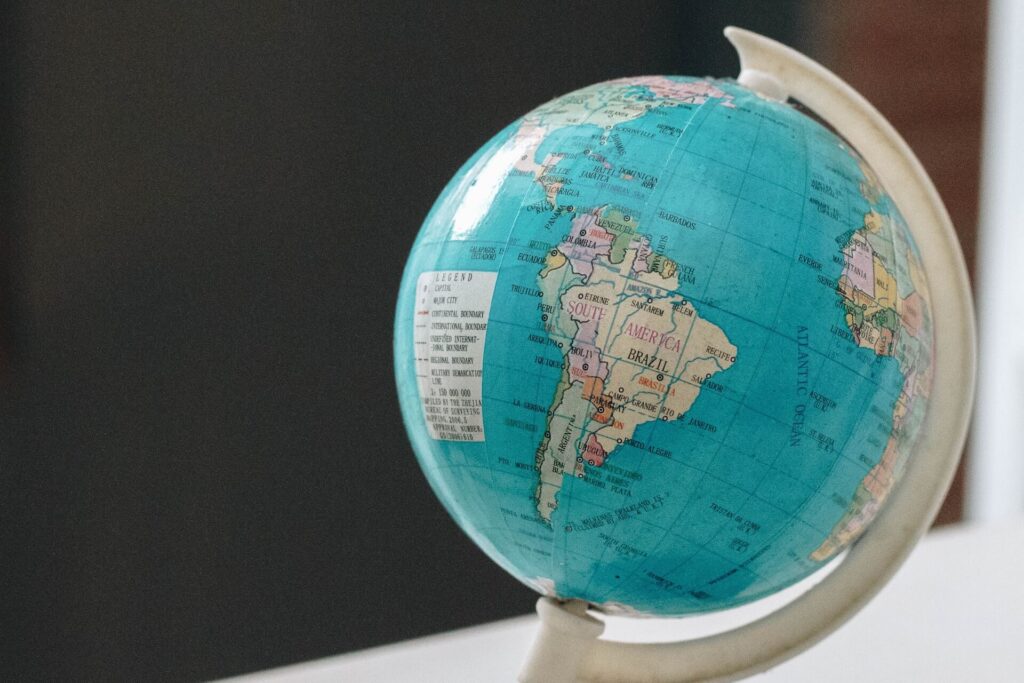Updated on December 15, 2023 by Lou Mac
Spanish is spoken by millions of people all over the world.
This (along with many other reasons) makes it an excellent language to learn – especially for travelling!
But exactly which countries speak Spanish?
In this post we’ll look into each of the 21 Spanish-speaking countries and what makes them so special, plus give you some information about Spanish as a whole and how you can learn it yourself!
Spanish Around the World
Spanish is one of the most important languages in modern times: It’s the 2nd most-spoken native language in the world, and the 4th most-spoken language overall.
It’s an official language of the United Nations, and it’s also the official language in 21 countries and territories, making it an essential tool for the traveller.
Even if you visit a country where Spanish isn’t the official language, it’ll still come in handy – with close to 600,000,000 Spanish speakers and Spanish learners around the globe, you can almost guarantee you’ll bump into someone who knows Spanish wherever you go.
So if you’re struggling with study motivation, just think about all the awesome places and people you’ll be exposed to once you learn it! This was a massive source of motivation for me, and it absolutely paid off.
21 Spanish-Speaking Countries and Territories
Due to colonisation from the late 15th century onwards, most of Latin America (and a small corner of Africa) now speaks Spanish.
That means you’ve got a ton of beautiful destinations to practise your Spanish in!
In order from most to least populated, here are the 21 countries and territories that count Spanish as an official language:
- Mexico
- Colombia
- Spain
- Argentina
- Perú
- Venezuela
- Chile
- Ecuador
- Guatemala
- Bolivia
- Dominican Republic
- Cuba
- Honduras
- Nicaragua
- Paraguay
- El Salvador
- Costa Rica
- Panama
- Uruguay
- Puerto Rico
- Equatorial Guinea
Now for the fun part: Let’s have a look at the highlights of each Spanish speaking country, and why you should visit! (Note: Population statistics are as of November 2023, taken from worldometer.)
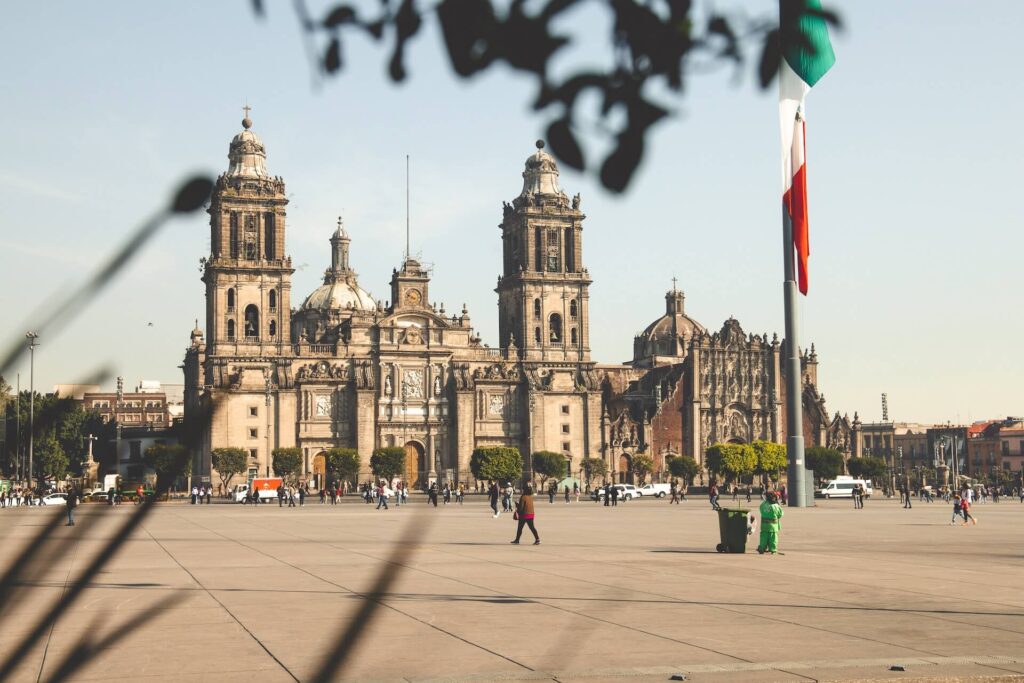
1. Mexico
Flag: 🇲🇽
Population: 128,450,000
Capital: Mexico City
Must-Try Dishes: Mole, tacos al pastor, birria tacos
Of all the Spanish-speaking countries in the world, Mexico is by far the most populated. It’s often associated with fiestas and delicious cuisine, but it’s so much more than that!
Mexico has a very rich history, and you can still find incredible Aztec and Mayan ruins like Chichén Itzá (one of the New Seven Wonders of the World!) and Palenque throughout the country. It’s also home to bustling markets, festivals, diverse cities, jungles and world-famous beaches.
And while I said Mexico is more than delicious cuisine, I still can’t leave it out of this description! In Mexico you’ll find some of the best food in the world, so make sure you don’t miss out on street tacos, tamales, mezcal and the like.
If you’re travelling to Mexico and want to learn Spanish (which I recommend), you’re in luck: Mexican Spanish is one of the easier dialects to learn!
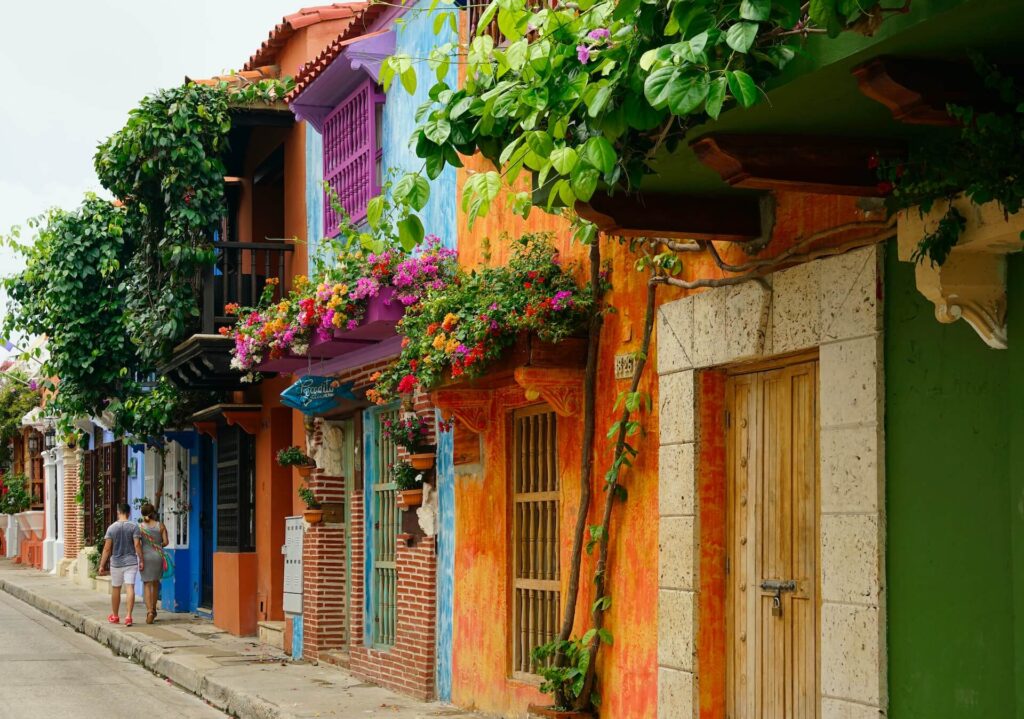
2. Colombia
Flag: 🇨🇴
Population: 52,100,000
Capital: Bogotá
Must-Try Dishes: Arepas, bandeja paisa, ajiaco
Colombia is another diverse South American gem. You won’t be disappointed with its scenery from the Amazonía rainforest region, to the Ciudad Perdida (Lost City) trek, to Cocora Valley (with its famous wax palms) and the pristine beaches of Tayrona National Park.
I said it’s diverse, and I was not exaggerating: It’s one of the world’s “megadiverse” countries, with more than 50,000 bird and plant species living there. How crazy is that!
Colombian food is definitely worth a try, and Colombian people themselves are known for being warm and welcoming. Colombian Spanish is another (quote unquote) “easy” Spanish dialect to learn, and it comes in many accents. My absolute favourite is the paisa accent, which you can listen to here. It hails from the city of Medellín, which is usually a favourite for travellers (and is next on my list!).
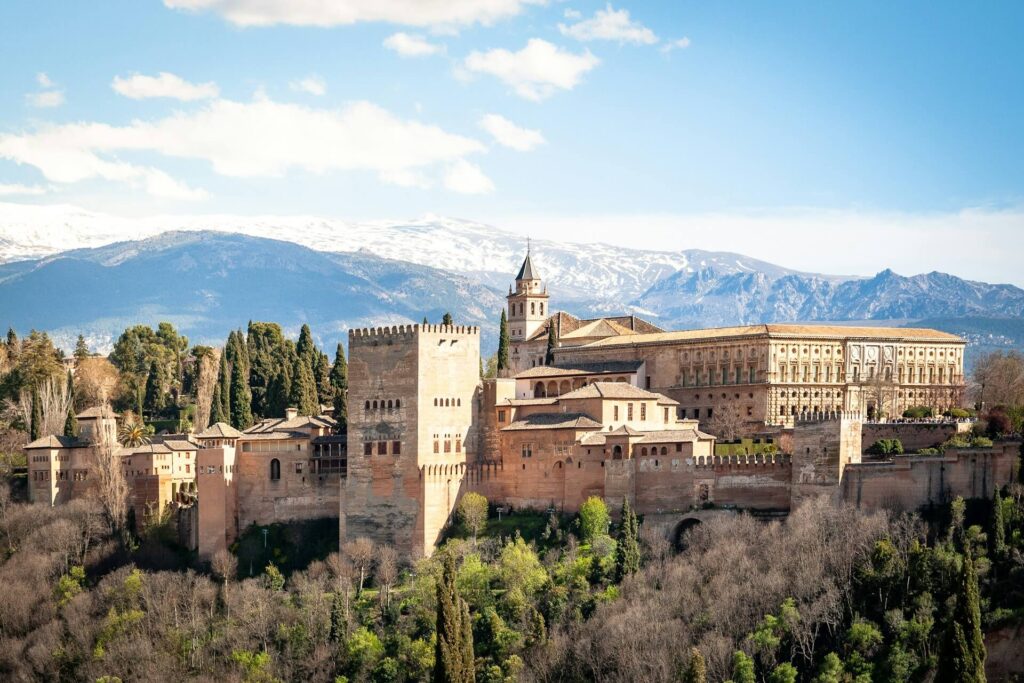
3. Spain
Flag: 🇪🇸
Population: 47,500,000
Capital: Madrid
Must-Try Dishes: Paella, churros, tortilla de patatas
Spain is one of the most visited countries in the world, with over 100 million tourists visiting every year. And once you’ve been there, it’s easy to see why!
Firstly, Spanish food is just straight up amazing. Spain is famous for their paella, but they also have an incredible amount of other delicious dishes and tapas to tuck into. Their tapa culture is one of my favourite things about the place, and if you visit specific areas in the south of Spain, tapas are even free when you order a drink! (Not sure how they sustain that, but let’s not question it).
The weather is great, the architecture is spectacular, and there’s a ton of history to be uncovered. Spain has many UNESCO World Heritage Sites, such as the Alhambra (seriously impressive), the Old Town of Segovia and the Real Alcázar.
As far as the language goes, Spanish from Spain is relatively easy to understand – at least it can be a lot easier than some Latin American dialects!
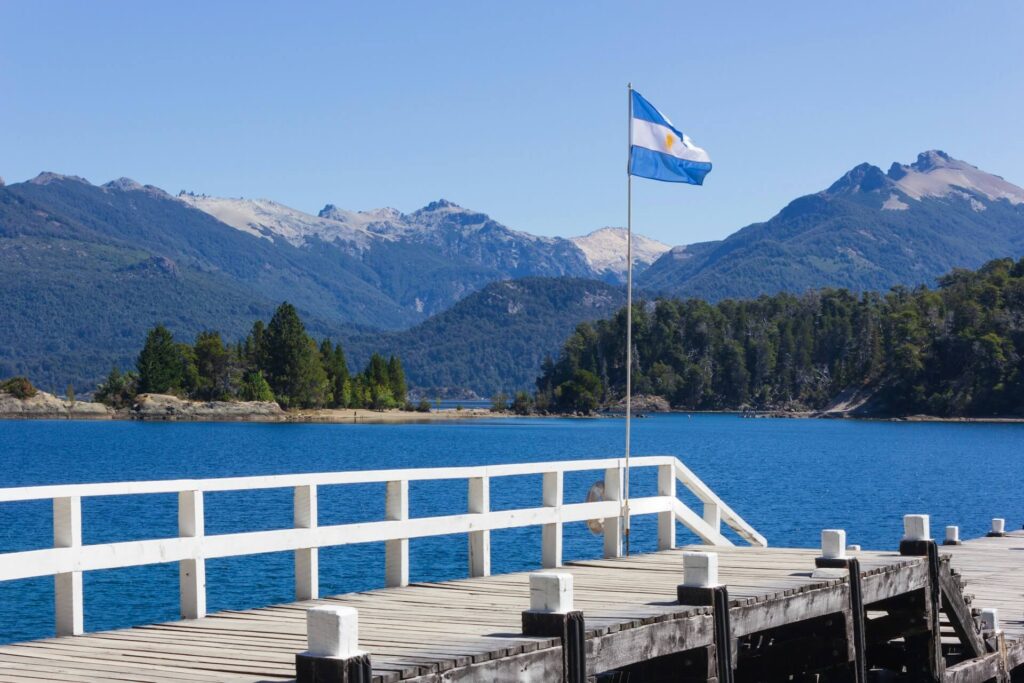
4. Argentina
Flag: 🇦🇷
Population: 45,780,000
Capital: Buenos Aires
Must-Try Dishes: Asado, empanadas, alfajores
Argentina is a passionate South American country. It’s the 8th largest country in the world in terms of land mass, which makes it extremely diverse!
The beautiful and captivating capital of Buenos Aires is often referred to as the “Paris of South America” (though I don’t think it needs to be compared to other cities, it’s just unique in its own right). The north west regions are often drier and desert-like, with dramatic rock formations like in Jujuy, and the northern border is home to the famous Iguazú Falls.
And let’s not forget Patagonia! It’s world-famous, and absolutely lives up to the hype. It’s a massive region with so many things to explore, but some of my favourite places are the Siete Lagos, Mount Fitz Roy and the Perito Moreno glacier.
Of course, if you eat meat, you cannot miss out on the Argentinean culinary scene. Their barbecue known as asado is second to none, their empanadas are bomb, and you have to join locals in sharing mate. There are so many other great foods to try, you’ll just have to go yourself and see!
Argentinian people themselves are great, they’re passionate about a lot of things and speak with a beautiful accent (one of my faves). They’re also often quite interested and curious about travellers, which made me feel very welcome when I was there!
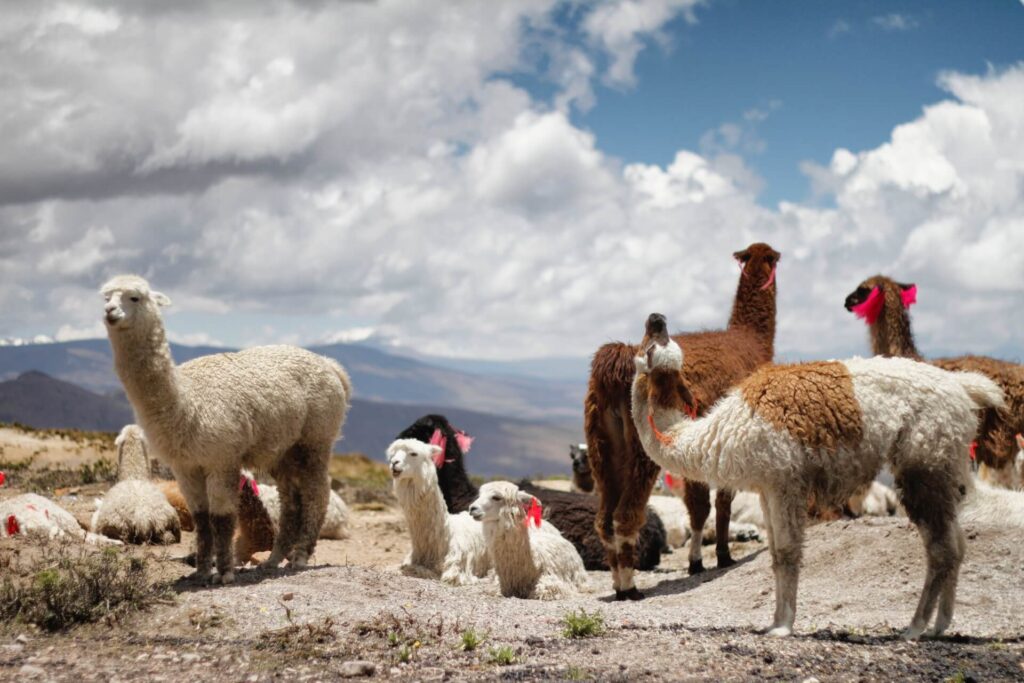
5. Perú
Flag: 🇵🇪
Population: 34,350,000
Capital: Lima
Must-Try Dishes: Ceviche, lomo saltado, ají de gallina
Peru, pe! This beautiful place captivates with its archaeological wonders and diverse landscapes.
The breathtaking mountain citadel of Machu Picchu, for example, still stands around 600 years later, and is a testament to the ingenuity of the ancient Incas. It’s a must-see for history enthusiasts and nature lovers alike.
There are countless amazing hikes throughout the country, and the food there is incredible! It’s a fusion of Spanish, African, and Asian influences, resulting in some unique and special (and very tasty) dishes.
Peruvian people usually take pride in sharing their traditions and stories, and their Spanish is relatively neutral, so they shouldn’t be too difficult to understand (unlike the people in neighbouring Chile).
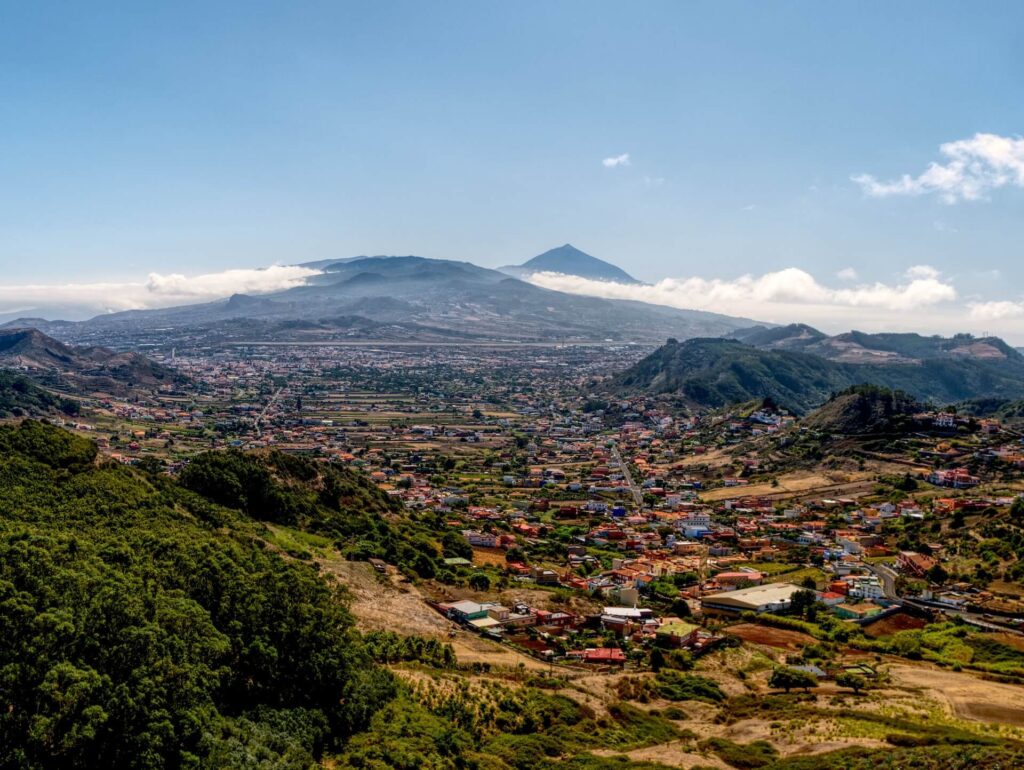
6. Venezuela
Flag: 🇻🇪
Population: 28,840,000
Capital: Caracas
Must-Try Dishes: Pabellón criollo, tequeños, mandocas
Venezuela is nestled on the northern coast of South America. Its tropical coastline borders the Caribbean Sea, while further inland you’ll find the Andes and other stunning landscapes. This includes the iconic Angel Falls, the world’s highest waterfall at 979 metres (3,212 ft)!
The capital Caracas buzzes with energy, nature-lovers can explore the Gran Sabana region or hike Mount Roraima, and the beaches look like they’d cure all your problems if you swam in them.
I’d love to go to Venezuela one day, but unfortunately travelling there isn’t currently recommended due to high levels of crime and political instability (though who knows how much of this is fear mongering). Some also consider it unethical to travel there currently, so that’s also something to keep in mind.
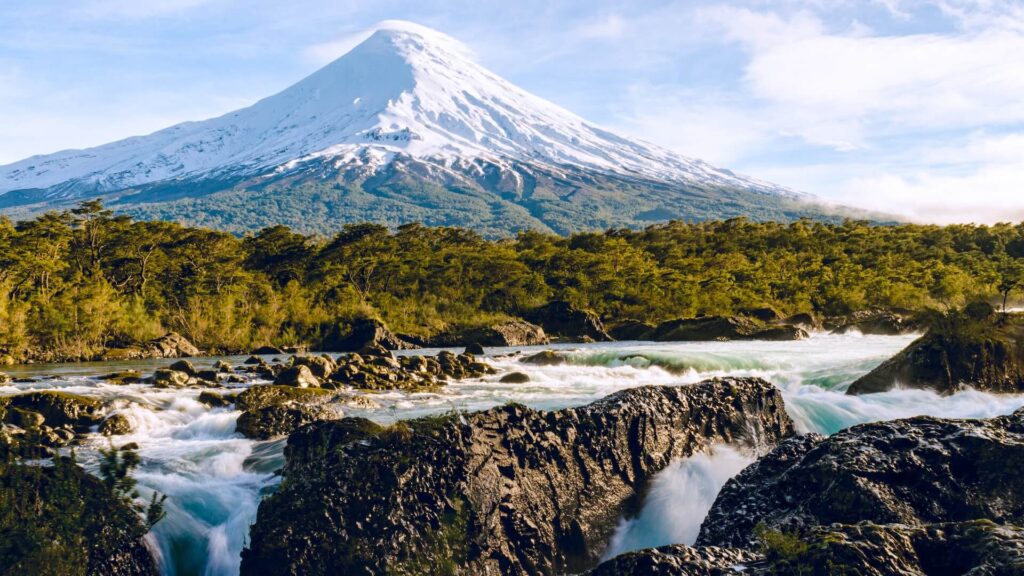
7. Chile
Flag: 🇨🇱
Population: 19,630,000
Capital: Santiago de Chile
Must-Try Dishes: Pastel de choclo, curanto, completos, empanadas chilenas
Click here for more facts about Chile
Chi-chi-chi, le-le-le! I could write books on this long, skinny land of extremes. It stretches from the Atacama Desert (the driest non-polar desert in the world) in the north to the glaciers of Patagonia in the south, with just about every sort of landscape in between. Forests, lakes, mountains, volcanoes, you name it, Chile has it.
You could spend months exploring this country, as there is so much beauty to see in all four seasons! It’s also one of the safest countries in Latin America, which makes travel there even better. Aside from the obvious visit to Santiago and Valparaíso, I’d recommend that you don’t miss: Cochamó Valley, the Carretera Austral, and Torres del Paine National Park (yes, I’ve limited it to three places or else this post would become way too long).
Chilean cuisine is an interesting one – it’s absolutely delicious, but as a traveller it’s really hard to experience because the best food is cooked at home! I’d recommend you befriend a Chilean and get yourself invited to their Mum’s place 😉 having a Chilean friend is also a great way of improving your Chilean Spanish, which is notoriously fast, full of slang and difficult to understand.
Chile is almost my most beloved country (second only to my home country), and a piece of my heart lives there.
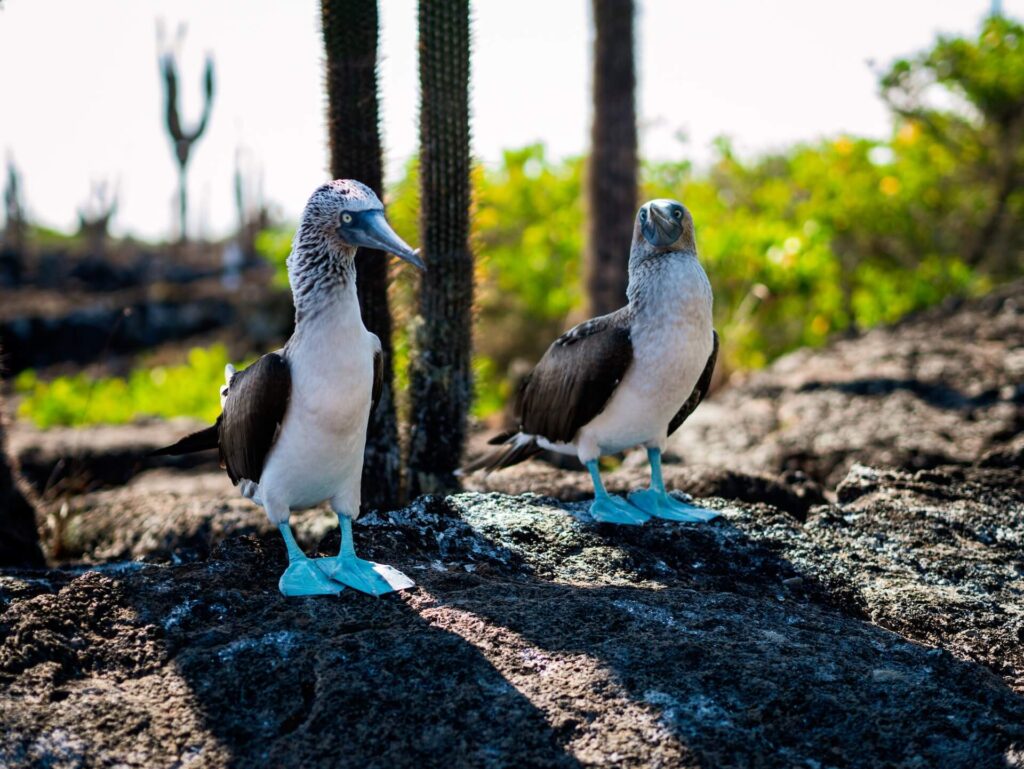
8. Ecuador
Flag: 🇪🇨
Population: 18,190,000
Capital: Quito
Must-Try Dishes: Bolón de verde, encocado de pescado, seco de pollo
Ecuador is a South American country that straddles the equator – in fact, it literally means “equator” in Spanish. It’s known for its biodiversity and the fascinating Galápagos Islands (maybe you’ve heard of those?). It’s on the expensive side to visit this famous volcanic archipelago, but I’ve heard it’s well worth it.
Inland you’ve got Quito, Ecuador’s capital. It’s a UNESCO World Heritage site, and is a sight to behold surrounded by its volcanic peaks. Other unmissable places/activities include the popular Quilotoa Loop, the colonial city of Cuenca, the indigenous markets in Otavalo and Baños de Agua Santa.
Fun fact: Ecuador was the first country to enshrine the rights of nature in its constitution!
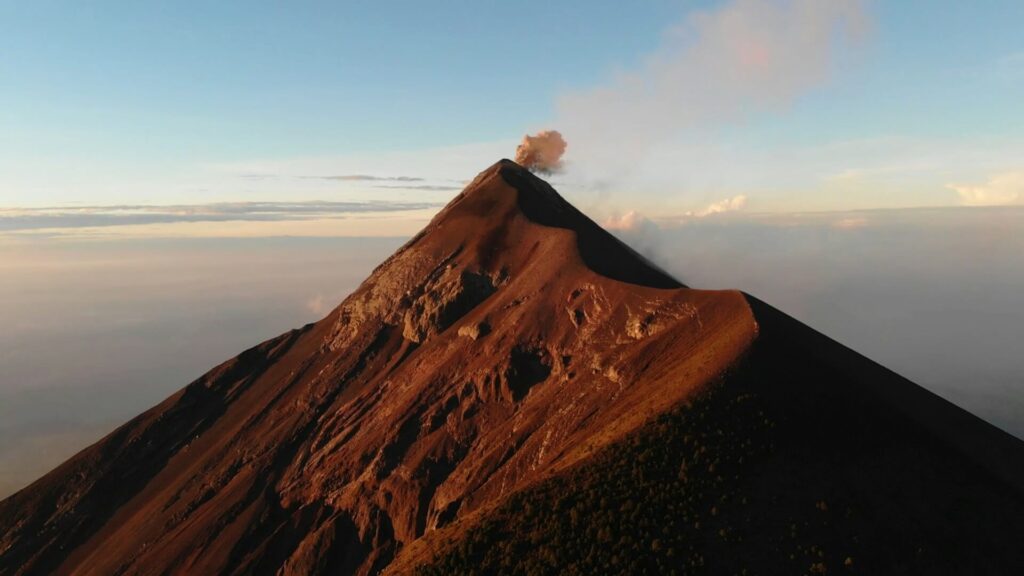
9. Guatemala
Flag: 🇬🇹
Population: 18,100,000
Capital: Guatemala City
Must-Try Dishes: Pepián de pollo, hilachas, kak’ik
Guatemala is located in the heart of Central America. There’s tonnes to see, from bustling markets (like in Chichicastenango) to mist-shrouded ruins (like Tikal, thought to be thousands of years old) to breathtaking volcanoes (such as the Pacaya volcano).
In fact, there are 37 volcanoes in Guatemala, 3 of which are constantly active. You can even hike up some of these (!). A friend of mine was there once when Volcán de Fuego (volcano of fire) erupted – she could see it erupting in the distance, but said the locals didn’t seem too phased by it.
Around half of the population is indigenous, which keeps alive the beautiful traditional textiles and lively festivals.
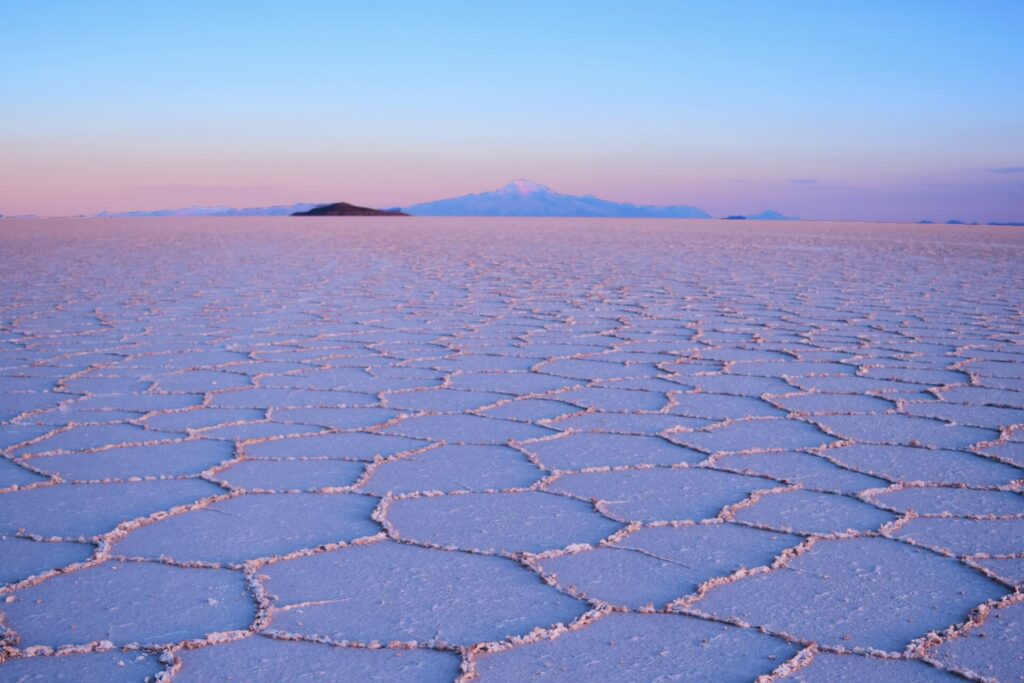
10. Bolivia
Flag: 🇧🇴
Population: 12,380,000
Capital: Sucre (constitutional capital) / La Paz (seat of government)
Must-Try Dishes: Cuñapé, salteñas, sajta de pollo
Bolivia is one of only two landlocked countries in South America (the second being Paraguay). It’s a bit of a soft spot for Bolivians (and understandably so), who continue their fight for coastline after it was taken by Chile in the late 1800s.
But despite having no access to the ocean, Bolivia has a lot to offer. Sucre has a lovely colonial charm and La Paz takes the cake of highest capital in the world, at a dizzying (literally) 3,250-4,100 metres (10,650-13,250 feet) above sea level.
You’ve probably seen the otherworldly salt flats of Uyuni, and the fun photos that people take there (my poor sister had to participate in one of these shoots with her tour group, despite being sick with gastro). But other highlights include the ruins of Tiwanaku, Lake Titicaca (the highest navigable lake) and the “Death Road” (unfortunately named that for a reason), which now offers a thrilling biking experience.
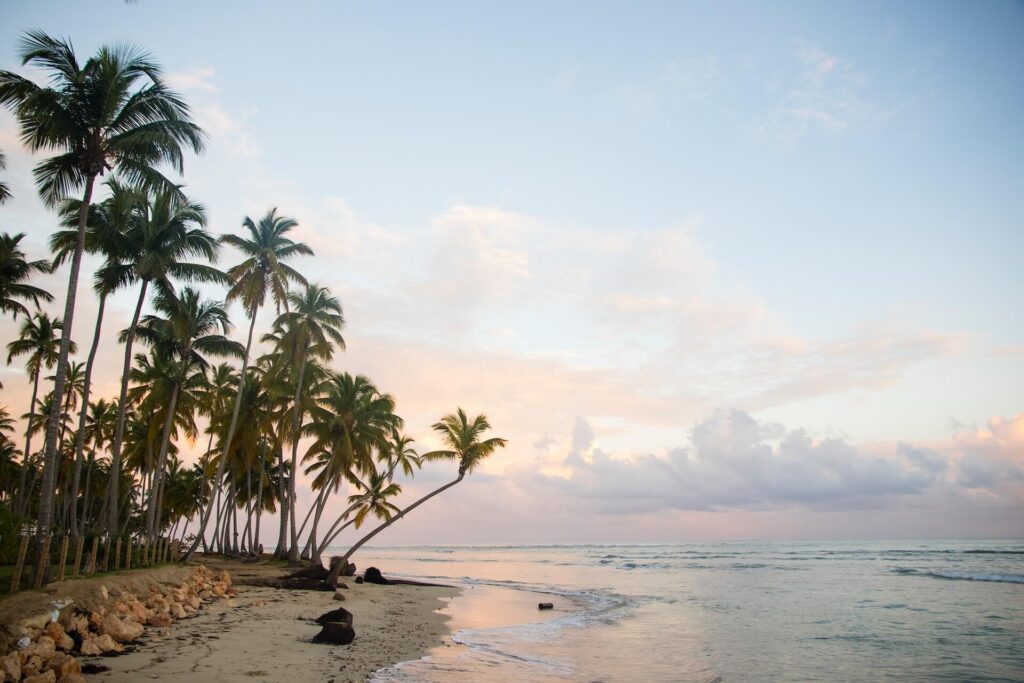
11. Dominican Republic
Flag: 🇩🇴
Population: 11,330,000
Capital: Santo Domingo
Must-Try Dishes: La bandera, mofongo, mangú
The Dominican Republic is renowned for its pristine beaches, vibrant music, and warm hospitality. It’s situated in the Caribbean Sea, and is home to the Caribbean’s highest peak: Pico Duarte, which rises up to 3,087 metres (10,125 feet).
It has one UNESCO World Heritage site, the Colonial City of Santo Domingo, which is the oldest continuously inhabited European-established settlement in the Americas! Not altogether unsurprisingly, it’s also the site of the first cathedral, hospital, customs house and university in the Americas.
If you’re more into beaches than history, then the stunning Punta Cana and Puerto Plata will be more up your alley.
Also, if you’re going there to practise your Spanish, I applaud you – Dominican Spanish, along with other Caribbean dialects, are very challenging. If I’ve piqued your curiosity, you can (attempt to) listen to it here!
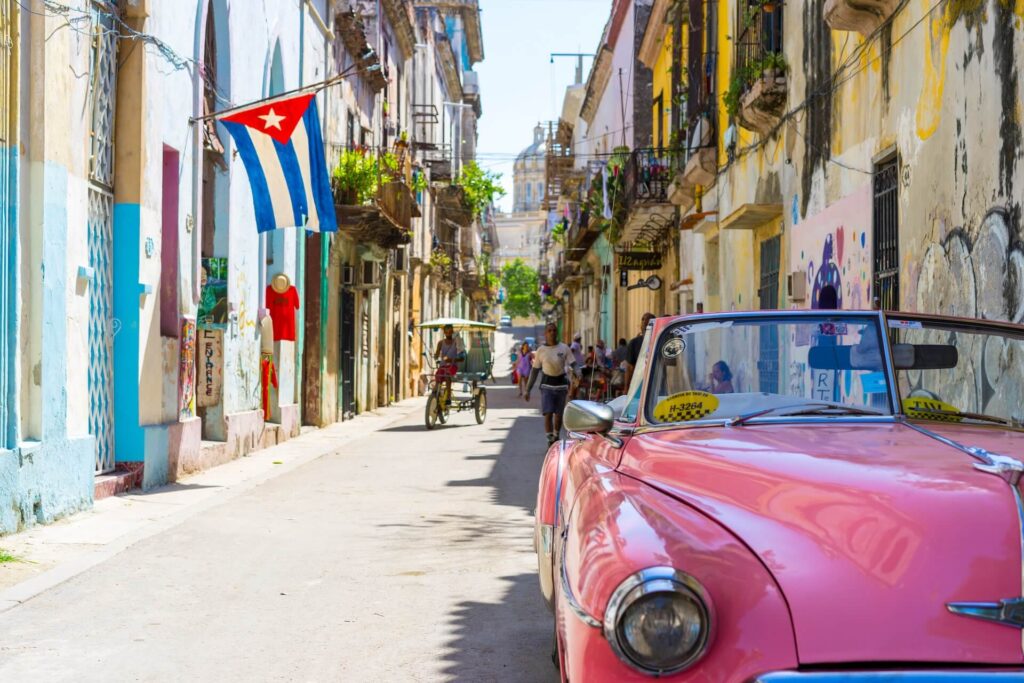
12. Cuba
Flag: 🇨🇺
Population: 11,190,000
Capital: Havana
Must-Try Dishes: Ropa vieja, vaca frita, boliche
Cuba almost seems like it was frozen in time, what with its colonial architecture and classic cars. The reason for all these funky vintage cars is that up until very recently the importation of American cars was banned, and they’ve now become somewhat of a symbol for the island.
Cuban music is addictive and unique, and is often considered one of the most influential styles in the world. It goes hand in hand with Cuban salsa – so Cuba would be a pretty special place to start taking salsa classes!
With its colourful streets, they say Havana is a must-visit, while the historic streets of Trinidad are also super interesting and a little bit more relaxed. Stunning white sand beaches are also found on the peninsula of Varadero and other areas.
Unfortunately the authoritarian regime in Cuba doesn’t make life easy for its inhabitants.
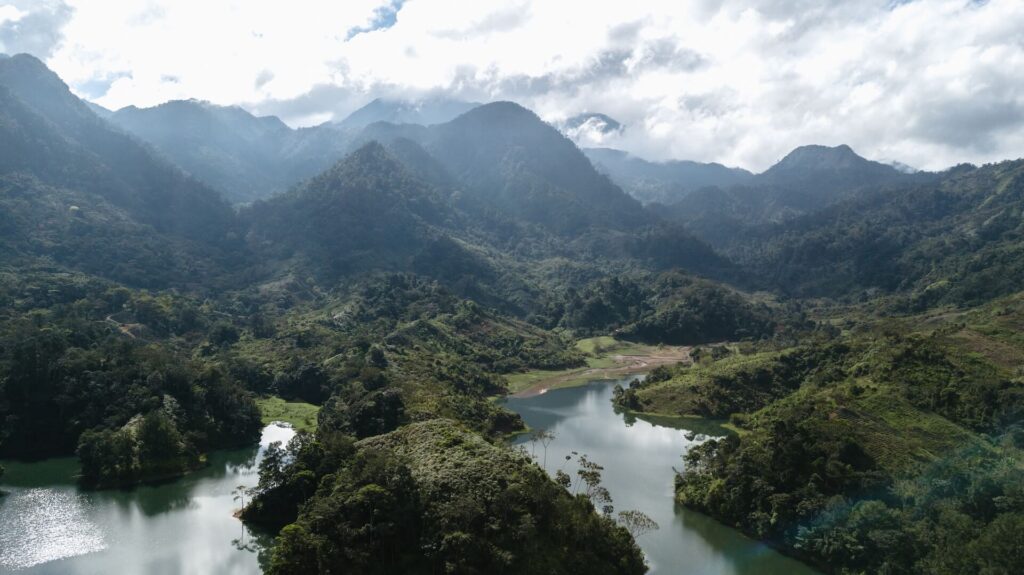
13. Honduras
Flag: 🇭🇳
Population: 10,590,000
Capital: Tegucigalpa
Must-Try Dishes: Sopa de caracol, baleadas, pastelitos de perro
Like a lot of Central American countries, Honduras offers a blend of Mayan ruins, tropical rainforests, and Caribbean beaches.
Specifically, the ruins of the ancient city of Copán are worth seeing, along with the Pico Bonito National Park. The Bay Islands, north of the mainland in the Caribbean Sea, would be the perfect playground for those of you interested in diving. This area actually encompasses part of the Mesoamerican Reef – the world’s second largest barrier reef, second only to the famous Great Barrier Reef in Australia.
Honduras sometimes has a reputation for not being the safest of countries – it’s not entirely untrue, though the country still receives plenty of travellers who enjoy their time there.
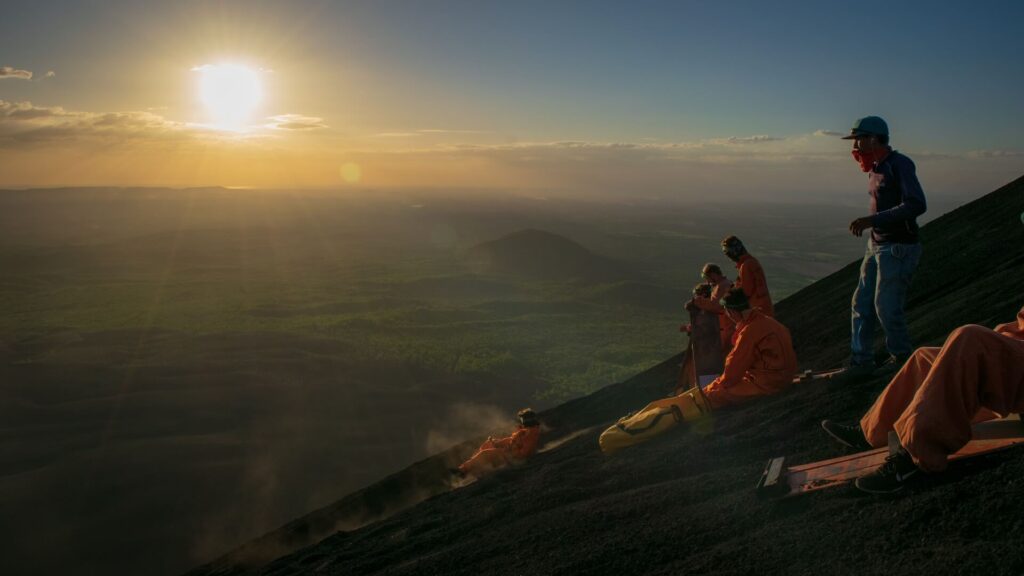
14. Nicaragua
Flag: 🇳🇮
Population: 7,050,000
Capital: Managua
Must-Try Dishes: Gallo pinto, nacatamal, indio viejo
Nicaragua is a geological hotspot, and yet another Latin American country that’s located on the Pacific Ring of Fire.
Volcano hiking (and volcano boarding!) is a major attraction here, despite a big handful of the volcanoes still being active. The volcanoes are awe-inspiring, but they aren’t the only thing that draws travellers to the country.
Lake Nicaragua and Lake Managua are the two largest lakes in Central America. Apparently, Lake Nicaragua is so large that Spanish colonists initially mistook it for the ocean. It’s even home to freshwater sharks – apparently this is a unique phenomenon, but since I’m not a fan of sharks, I wasn’t overjoyed to hear this fact. They’re bull sharks too, which are aggressive and rather dangerous…
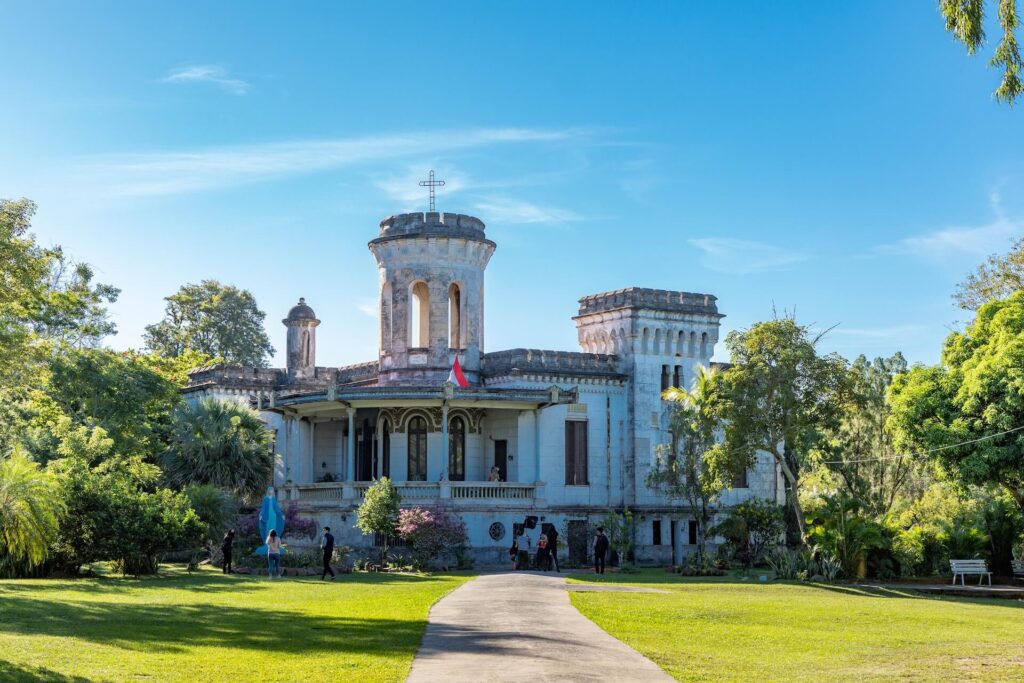
15. Paraguay
Flag: 🇵🇾
Population: 6,860,000
Capital: Asunción
Must-Try Dishes: Pira caldo, chipa guazu, pastel mandi’o
Paraguay is our second landlocked South American country. It’s often overlooked by travellers, who pop between Brazil, Argentina and Bolivia without stopping by (guilty).
But I’m told it’s got a lot to offer. Part of the breathtaking Iguazú Falls is in Paraguay (so no, it’s not just Brazil and Argentina’s thing!) and the unique Guaraní culture has a huge influence on the country. According to Britannica, “more Paraguayans speak and understand Guaraní than Spanish.”
The Jesuit Missions, a UNESCO World Heritage site, offers a glimpse into Paraguay’s colonial past. Lastly, for a cultural experience, attend the lively Ñandutí Festival celebrating traditional Paraguayan lacework.
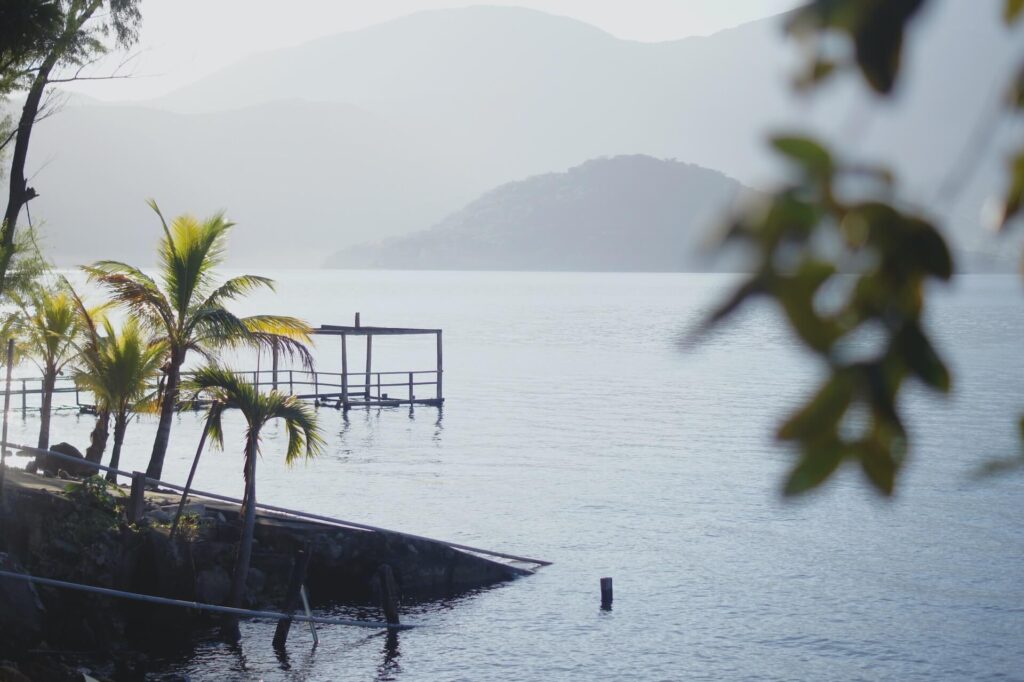
16. El Salvador
Flag: 🇸🇻
Population: 6,360,000
Capital: San Salvador
Must-Try Dishes: Pupusas, yuca frita, torta
El Salvador is the smallest country (by land size) in Central America – but that doesn’t hold it back! To start off, it’s one of the most biodiverse places on Earth on a per unit of area basis, which is pretty cool.
Secondly, it has a rich history. For example, you can visit the archaeological site of Joya de Cerén, a UNESCO World Heritage site known as the “Pompeii of the Americas.” You might be able to tell from the name, but it’s called this because the pre-Hispanic farming community there met the same unfortunate end as those in Pompeii – it was buried under a volcanic eruption in AD 600.
It’s also got interesting towns, such as San Salvador or those along the magical Ruta de las Flores. And of course, if you’re keen on the beach, the small town of El Tunco on the Pacific coast has both waves and great nightlife.
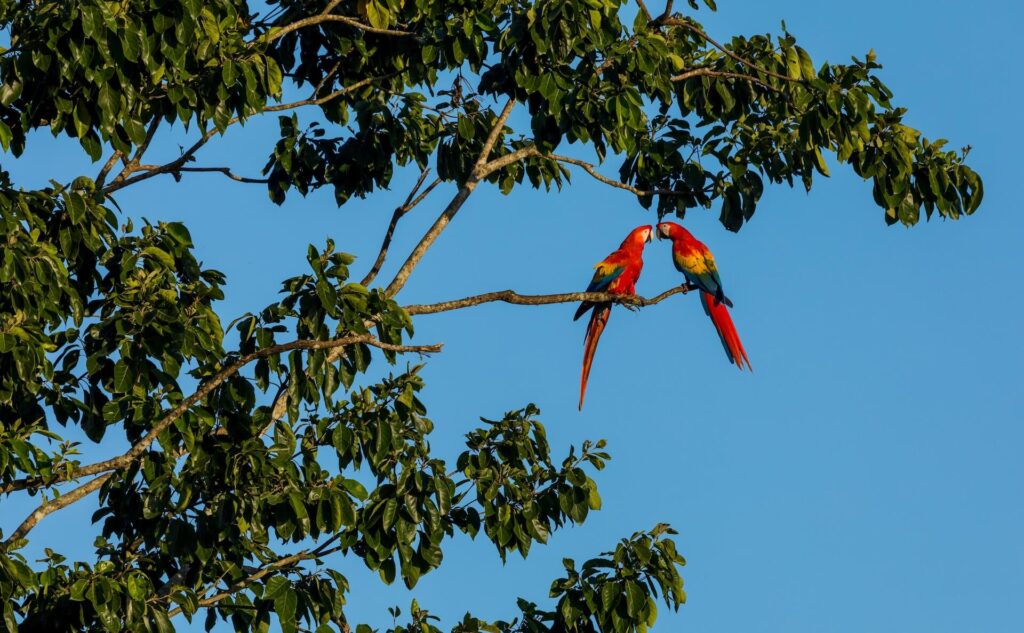
17. Costa Rica
Flag: 🇨🇷
Population: 5,210,000
Capital: San José
Must-Try Dishes: Gallo pinto, casado, chifrijo
Costa Rica is another haven of biodiversity. About 5% of all species on Earth live there, totalling a whopping 500,000 species! This is even more impressive considering that Costa Rica is a relatively small country (it ranks #129 on the list of large to small countries).
It’s also famed for its beaches and lush rainforests, like in the beautiful Manuel Antonio National Park. The Arenal Volcano National Park is another highlight, along with the dreamy Monteverde Cloud Forest.
For those after a bit more adrenaline, adventure activities abound in Costa Rica, from zip-lining through the jungle to surfing in Tamarindo.
And let’s finish with a cool fact: Costa Rica is a global leader in environmental conservation, with over 25% of its land protected!
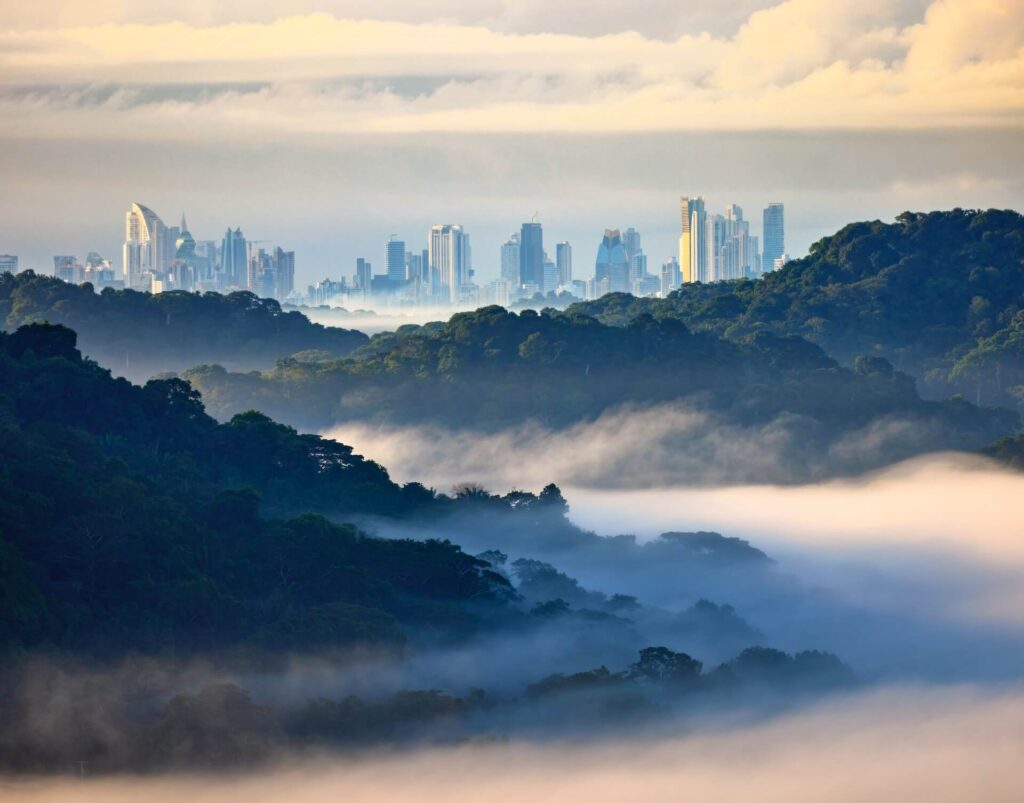
18. Panamá
Flag: 🇵🇦
Population: 4,470,000
Capital: Panama City
Must-Try Dishes: Sancocho, almojábanos, carne entomatada
Panama, where the Pacific Ocean meets the Caribbean Sea, is renowned for its iconic canal and diverse landscapes.
The Panama Canal is an incredible feat of engineering. It extends 82 kilometres across Panama, and was built to dramatically decrease the travel time for ships between the Pacific Ocean and the Atlantic Ocean/Caribbean Sea. Previously they would have to pass the southern tip of South America, which was often a treacherous journey. It was completed in 1914, which I think makes it even more impressive!
If you want a beach getaway, you won’t be disappointed: The Bocas del Toro archipelago and San Blas Islands have some pretty incredible beaches and coral reefs. Then we have Panama City, a juxtaposition of skyscrapers and historic sites such as the Casco Viejo.
Panama is also unique in that it’s the only place in the world where you can see the sun rise on the Pacific and set on the Atlantic!
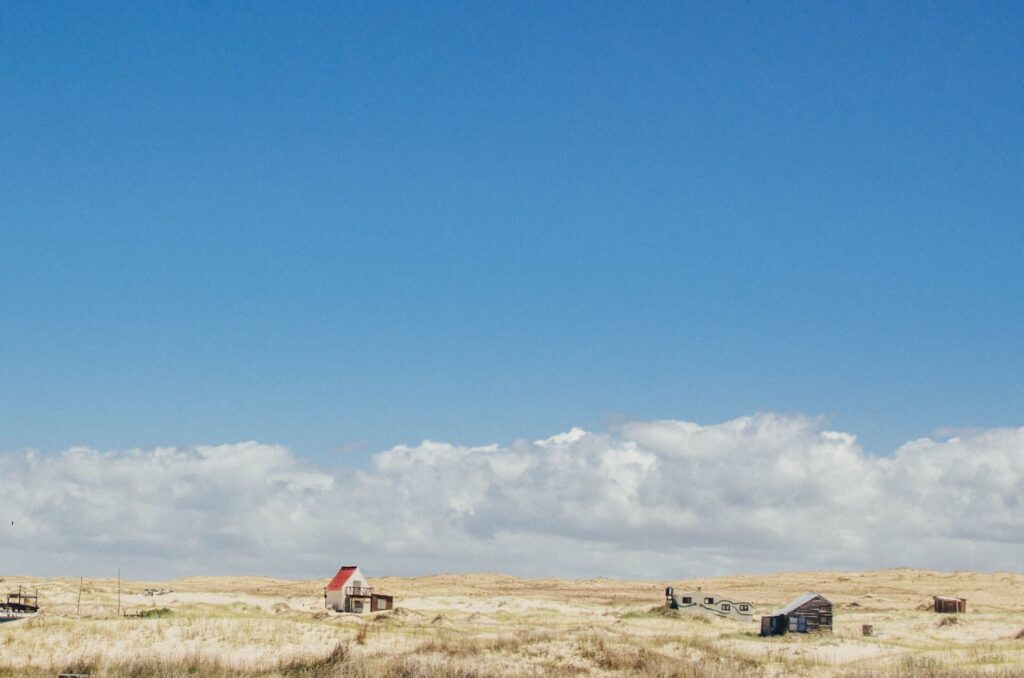
19. Uruguay
Flag: 🇺🇾
Population: 3,420,000
Capital: Montevideo
Must-Try Dishes: Asado, chivito, revuelto gramajo
Uruguay is a cool little place (both in terms of land mass and population!). It has a laid-back charm to it, which is especially apparent if you’ve just come across from Buenos Aires (which is a common route for travellers).
Colonia del Sacramento‘s historic district is a must-see, and really makes you feel like you’ve stepped onto a movie set! Montevideo has some cool colonial architecture, and some delicious food. I had the best barbecued chicken of my life there, which is very high praise since the meat I ate all over Argentina, Chile and Uruguay was incredible.
There are tonnes of great beach towns along the coast, from glamorous Punta del Este (which often sees celebrity guests) to the quirky La Pedrera (I don’t usually recommend hostels, but if you go there, you must stay at Viajero La Pedrera Hostel!). There’s also the super unique Cabo Polonio, a small settlement that has no electricity or running water, that you need a 4×4 to get to.
Lastly, Uruguay is a progressive country: It produces more than 97 percent of its electricity from renewable energy sources, and has fully legalised marijuana.
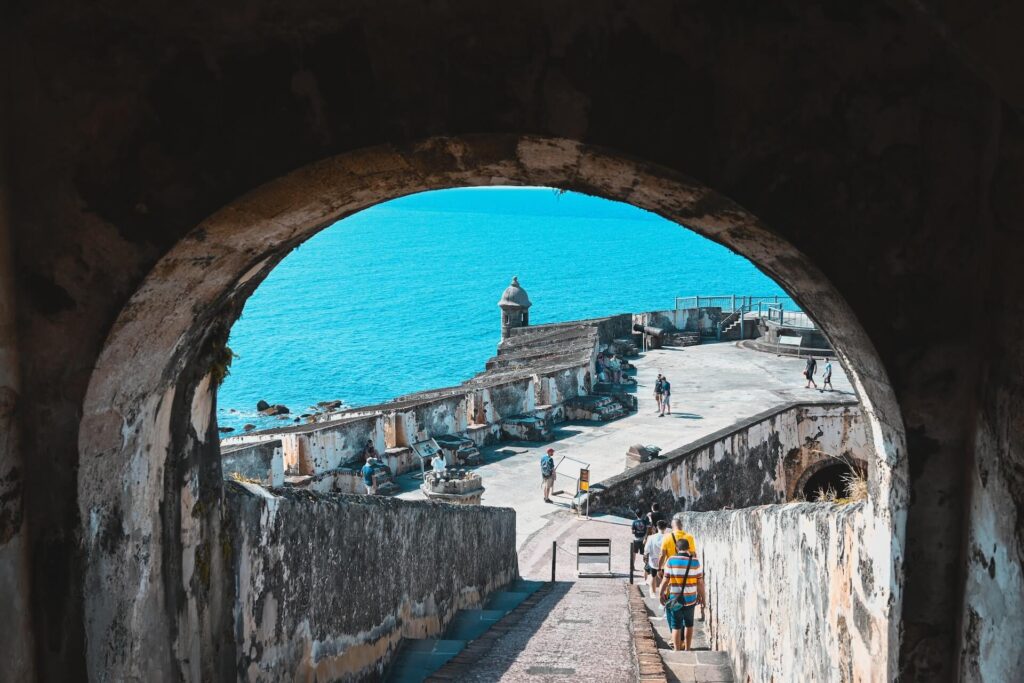
20. Puerto Rico
Flag: 🇵🇷
Population: 3,260,000
Capital: San Juan
Must-Try Dishes: Arroz con gandules, mofongo, caldo santo
P.R! Puerto Rico is another super cool Caribbean island where you’ll find rich history among tropical beauty. It’s also not technically a country: It’s an “unincorporated territory” of the United States, which means it has a unique blend of both Spanish and American influences.
The cultural hub of San Juan, with its colourful colonial architecture, is a great place to start off any trip there. The El Yunque National Forest is supposed to be a sacred place in Puerto Rican culture, and is well worth the visit. For some sun and sand, check out Culebra’s Flamenco Beach, or the beautiful Vieques Island (which also offers bioluminescent bay tours!).
And if you’re into Latin music (like me) you might be interested to know, if you didn’t already, that masses of famous musicians are from Puerto Rico. Bad Bunny, Daddy Yankee, Ricky Martin, Marc Anthony, Ozuna, Chayanne, Luis Fonsi, and Tego Calderón (just to name a few) all call the island home.
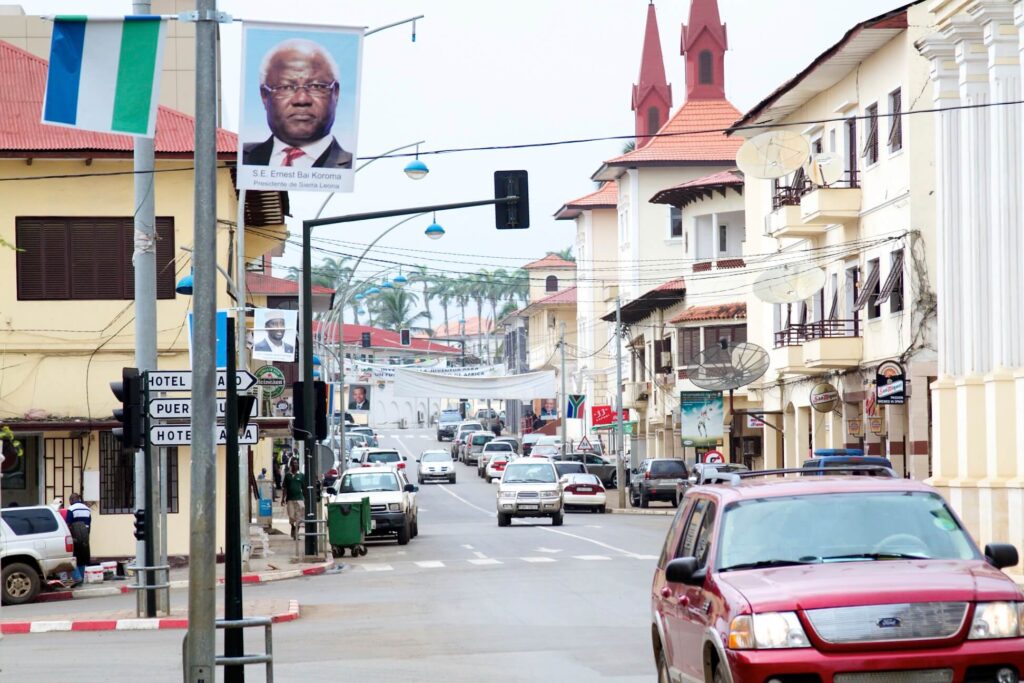
21. Equatorial Guinea
Flag: 🇬🇶
Population: 1,710,000
Capital: Malabo
Must-Try Dishes: Succotash, bilolas, pambota
On our list of Spanish-speaking countries, this is our only one in Africa! Situated on the west coast of the continent, Equatorial Guinea is made up of several different cultures. These, along with the Spanish influence, makes for a unique and diverse cuisine (like those dishes mentioned above).
There are beautiful beaches on Bioko Island, where the capital is located, as well as rainforests in Río Muni.
The Spanish here is typically quite different from other Spanish-speaking countries. The grammar can be a little different, as well as the pronunciation. For example, the d can sometimes sound like an r, and there is often no differentiation between the two r sounds (r and rr).
Countries with Significant No. of Spanish Speakers
These next few are countries that, while not having Spanish as an official language, do have a large population of Spanish speakers. And so, they are honourable mentions on our list!
United States
Population: 339,996,000
Number of Spanish speakers: 42,000,000
Percentage of Spanish-speakers: Around 12%
At 42,000,000 speakers, the United States actually has more Spanish speakers than most Spanish-speaking countries!
Belize
Population: 410,000
Number of Spanish speakers: 200,000
Percentage of Spanish-speakers: Around 48%
Belize is the only Central American country with English as its official language (though it has a large population of Spanish speakers). This is because it was once a British colony – it was called “British Honduras” until 1973, and full independence was granted in 1981.
Andorra
Population: 80,000
Number of Spanish speakers: Approx. 32,000
Percentage of Spanish-speakers: Around 40%
The official language in this tiny country is Catalan. However, being nestled in the Pyrenees between France and Spain, Spanish is very commonly spoken there.
Dialect Differences in Spanish Speaking Countries
As we’ve seen already, Spanish differs from country to country. But exactly how much?
Some people imagine it’s similar to the difference between English dialects, but I’m sure that Spanish is even more variable!
Thanks to influence from indigenous languages and other factors, Spanish dialects can differ in terms of everything from pronunciation and intonation to vocabulary and grammar. One of the biggest differences is between Latin American and European Spanish, however even within Latin America there is huge variety!
Check out these full posts on the topic to read more:
How You Can Learn Spanish
If you want to learn Spanish to travel to any of these countries (or just for general use), then the good news is that it’s relatively easy to learn in this day and age. The internet has provided us with a plethora of resources, from blog posts and YouTube videos to online teachers and language exchange partners. I taught myself Spanish this way, and you can, too!
Here are some posts of mine that are a good place to start:
- Best ways to learn Spanish
- How to learn Spanish fast
- Essential Spanish greetings
- Most common Spanish words
- How to conjugate Spanish verbs
- Complete Spanish pronunciation guide
- How to order food in Spanish
- How to ask “how much” in Spanish
And here are some more of my recommendations: If you prefer structured learning, you could try a course or app like Duolingo (yes, this can actually work!), LingQ or Rocket Languages. There are also tonnes of great podcasts, like Language Transfer and Notes in Spanish. Anki is my go-to for online flashcards, as well as Tandem and HelloTalk for having language exchanges.
As we’ve seen, Spanish is spoken the world over. Its diverse dialects, whether spoken on the streets of Mexico or the beaches of Costa Rica, add depth and character to the already beautiful language.
I seriously think that learning Spanish isn’t just acquiring a skill; it also opens a door to rich cultures and traditions.
If you’re still on the fence about learning Spanish, let me just say that you won’t regret it! Now you just need to decide which dialect you’re going to learn 😉

